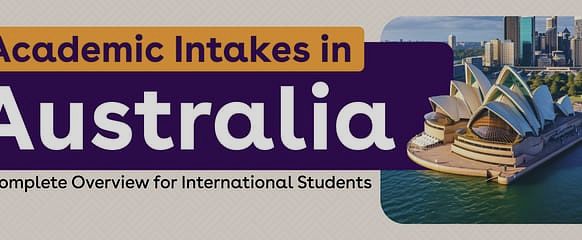Intakes in Australia: Major Intakes, Minor Intakes & Application Process
Jun 04, 2025

Share :
Are you ready to explore Australia's exciting academic world? Renowned for its Top-Ranked Universities and diverse academic options, this country was home to over 853,045 International Students in 2024, many from India, Nepal, and China.
Moreover, with the introduction of Ministerial Directive (MD) 111, Australia has revised its student visa framework to prioritize applications related to high-demand sectors, specifically Higher Education, and Vocational Education. As a result, International Students are increasingly drawn to Australia to pursue sought-after Programs in fields like STEM, Business, Nursing, and more.